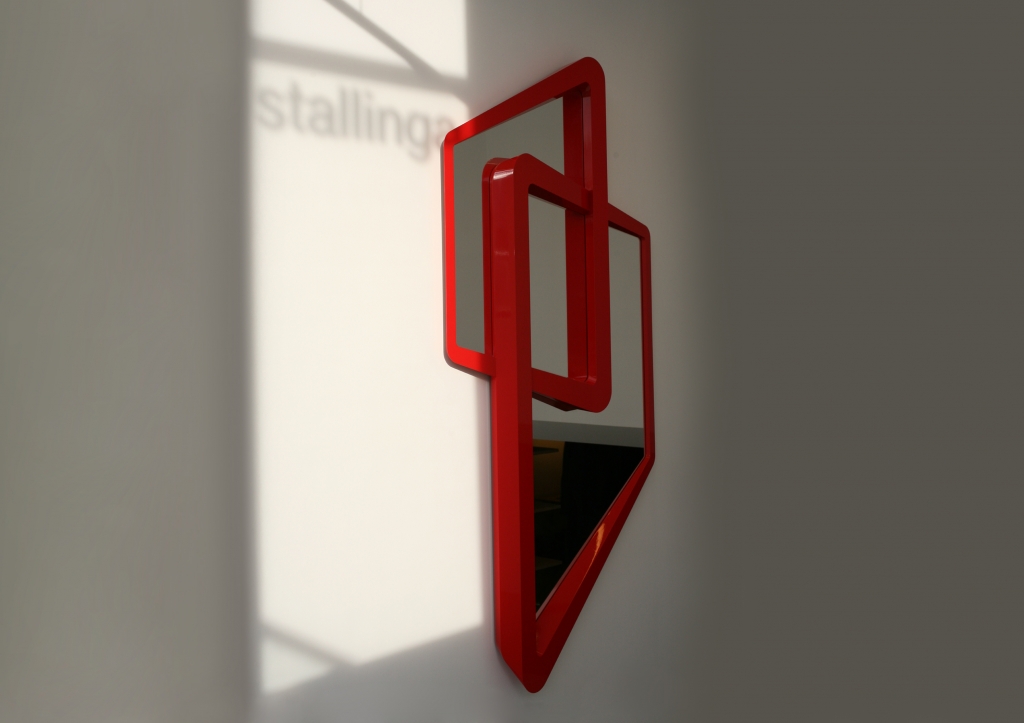Mirror Mirror
Since the development of perspective during the Renaissance, the spatial representation we know from paintings has been based on the laws of Euclidean geometry. We look through a frame into an illusionistic world of planes and vanishing points. The same visual rules apply when we stand in front of a mirror – we see a frame containing a picture of the world reflected inside it.
In Stallinga’s Mirror Mirror, these visual rules and conventions are flipped on their head. Unlike a traditionally framed mirror—where a single mirrored surface is framed around the perimeter—this mirror’s frame appears as two interlinked squares, criss-crossing the mirrored surface. Although these frames are hanging flush to the wall, their vanishing points seem to lead in opposite directions. The resulting affect is one of trompe l’oeil, where the thick red mirror frames appear to project outward from the wall.
Mirror Mirror creates a disorienting optical illusion. Basing one’s perception on the red frames that are seemingly projecting into space, the viewer’s eye anticipates seeing the spaces to their left and right reflected in the mirror image. However, the viewer is actually confronted by his/her own reflection. Once the eyes adjust to this visual puzzle, it slowly becomes clear that the projection of the frames is an illusion and the double mirror is in fact a flat, linear surface.
Colour: Red
Material: Ureol
Collection: Private collectors
Exhibitions: Art Amsterdam 2009, Der Aa Church Groningen 2015, PAN Amsterdam 2015

